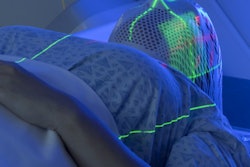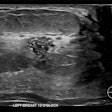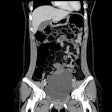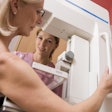Women are more likely than men to be subjected to inappropriate diagnostic imaging, according to Dutch research.
Dr. Stijntje Willemijn Dijk, a radiology resident and doctoral candidate at Erasmus MC in Rotterdam, and colleagues found a significant gender disparity in the data from the Medical Imaging Decision and Support (MIDAS) study, a multicenter cluster-randomized trial conducted in three academic hospitals.
Findings from previous studies have pointed to gender-based disparities in requests for diagnostic imaging, which may reflect unconscious biases, or gaps and systemic differences in how guidelines are developed or clinical decision-making is applied across the sexes, the authors wrote in an article published in European Radiology on 6 November.
However, the studies in this area have not been comprehensive, the researchers wrote, generally focusing on specific modalities or conditions, “and have not systematically evaluated whether women and men are equally likely to receive imaging that aligns with clinical guidelines.”
Using the ESR iGuide, a clinical decision support tool based on the American College of Radiology Appropriateness Criteria, the Dijk team classified 61,220 imaging requests submitted via computerized physician order entry systems as appropriate, conditionally appropriate, or inappropriate. The team included requests for CT, MRI, ultrasound, and x-ray.
Of the scored imaging requests, 31,025 were for women and 30,195 were for men. Overall, 6.7% of the requests were classified as inappropriate. The percentage of requests for women classified as inappropriate was higher (7.3%) than for men (6.1%) (p < 0.001, OR 1.22 [99% CI 1.12-1.33]). The difference was significant for women in the 25-65 age range subgroup and for women undergoing MRI (p < 0.001).
While not attaining the level of statistical significance, the other age groups and modalities, with the exception of CT, showed higher proportions of inappropriate requests for women, the authors added.
Dijk and colleagues posit that the driving factors for the disparities are likely both technology- and human-driven. These may include deficits or differences in awareness and training when ordering imaging for women, for example. The authors note that previous research suggests that biases and gender stereotypes may affect clinical judgment and perceptions, with the potential to affect treatment and diagnostic decisions.
“In the context of imaging, such biases could contribute to deviations from guideline-based appropriateness, especially if clinicians apply different thresholds for ordering or withholding exams based on patient sex," the authors wrote. "This highlights the need to consider not only guideline adherence but also the potential impact of implicit attitudes in clinical training and support systems.”
Furthermore, the researchers noted that, while the use of well-integrated decision-support tools could reduce these discrepancies by facilitating the use of consistent standards and clinical criteria in decision-making, the data from MIDAS did not reflect such a reduction in gender-based discrepancies in inappropriate imaging requests following the introduction of such decision-support tools.
Read the study findings on the European Radiology website.



















